“There is no other teacher but your own soul.”
Swami Vivekananda
“There is no other teacher but your own soul.”
Swami Vivekananda
Teachers of the Perennial Wisdom
A small but expanding collection of masters, mystics, sages, philosophers, and seers who, to one degree or another, have contributed to the body of work known as the perennial wisdom. These are listed in alphabetical order and the reader is encouraged to trust their own inner voice when seeking their guidance or counsel.
Teachers of the Perennial Wisdom
A small but expanding collection of masters, mystics, sages, philosophers, and seers who, to one degree or another, have contributed to the body of work known as the perennial wisdom. These are listed in alphabetical order and the reader is encouraged to trust their own inner voice when seeking their guidance or counsel.
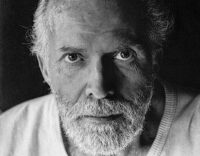 Born in New York City, at age 14 Adams experienced a complete spiritual awakening. Unable to process what happened to him, his parents dispatched him to see a local mystic, Joel Goldsmith (see his entry on this list), who after grasping the full extent of Adams’s awakening, sent him on a journey that ultimately would find him in an obscure corner of India to be mentored by Ramana Maharshi (see his entry on this list).
Born in New York City, at age 14 Adams experienced a complete spiritual awakening. Unable to process what happened to him, his parents dispatched him to see a local mystic, Joel Goldsmith (see his entry on this list), who after grasping the full extent of Adams’s awakening, sent him on a journey that ultimately would find him in an obscure corner of India to be mentored by Ramana Maharshi (see his entry on this list).
When Adams eventually returned to the U.S., he gave talks to Western audiences largely unfamiliar with the non-dual principles of Advaita Vedanta. Key aspects of Adams’s teachings included:
There is Only the Self (God)
As with other perennial wisdom teachers, Adams taught that everything – the universe, mind, body – is an appearance in pure, unconditioned awareness. He called this the Self and noted that all human suffering was caused by the mind, which necessarily creates labels and in those labels separation. We are not individuals, he said, we are awareness itself.
Silence is the Highest Teaching
Much like his spiritual mentor, Ramana, Adams said ultimate Truth could only be found in inner stillness and silence. His talks were often punctuated by long stretches of complete silence (Raman would often go days without speaking).
You are already free. Simply awaken to what you are.
Self-Inquiry
True to Advaita Vedanta, Adams said self-inquiry was the fastest and surest path to self-realization. By constantly and relentlessly inquiring into the thinker and thoughts, thoughts would gradually disappear of their own accord and the Self behind the imagined thinker would be revealed.
Compassion and Humility
Adams rejected the dogma of organized religion, Adams as with all perennial wisdom teachers maintained that there were Truths buried beneath that dogma that were important. In particular he urged his students to find compassion for all of life (love thy neighbor) and humility.
Although Adams never wrote any books, his students collected and printed some of his best-known talks in Silence of the Heart, a master class in Advaita Vedanta teachings.
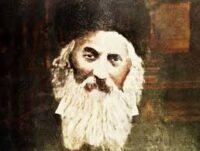 Meaning ‘Master of the Good Name,’ Baal Shem Tov was a Jewish mystic and healer in Eastern Europe who became the founder of Hasidism, one of the most influential spiritual movements in Judaism. Known for his wisdom, compassion, and reputed healing powers, he became a spiritual guide for ordinary Jews. Core themes in his teachings included:
Meaning ‘Master of the Good Name,’ Baal Shem Tov was a Jewish mystic and healer in Eastern Europe who became the founder of Hasidism, one of the most influential spiritual movements in Judaism. Known for his wisdom, compassion, and reputed healing powers, he became a spiritual guide for ordinary Jews. Core themes in his teachings included:
God In All
The Baal Shem Tov emphasized that God is not distant but present in every aspect of creation. Even the simplest act, when done with awareness, can be a form of communion with God.
Joy and Love Over Fear
Before him, Jewish religious life for many was heavily focused on fear of sin and rigid observance. The Baal Shem Tov taught that serving God with joy, love, and enthusiasm was a higher path to divine closeness.
When you realize that God is everywhere and there’s nothing separating you from Him … all your fears and troubles will disappear.
Sincerity Over Scholarship
In an era when deep Talmudic study was considered the primary path to God, he taught that simple, heartfelt prayer from even an unlearned person could be more precious than scholarly brilliance if it was filled with sincerity.
Community and Compassion
He encouraged warmth, inclusiveness, and caring for others, which drew ordinary Jews into a sense of spiritual belonging. The Hasidic rebbe (teacher) became not just a scholar but a spiritual father, guiding people toward God in personal ways.
Access to the Mystical
He democratized aspects of Jewish mysticism (Kabbalah), showing that divine experience was not reserved for elites but open to every soul through prayer, music, storytelling, and awareness of God’s nearness.
Baal Shem Tov stands out as a teacher known for bringing the search for God down to the level of every day life. He reminded seeers that:
-
God can be encountered in ordinary acts done with love and awareness.
-
Spiritual life flourishes more through joy and sincerity than through fear and perfectionism.
-
Every soul, no matter how simple, has infinite value and capacity for intimacy with the Divine.
Good books on learning morning about The Baal Shem Tov include: The Light and Fire of the Baal Shem Tov, Baal Shem Tov Faith Love Joy: Mystical Stories of the Legendary Kabbalah Master, and Sayings Of The Baal Shem Tov – Kesser Shem Tov: Meditations Actions & Philosophy (Meditations Mysticism Meaning).
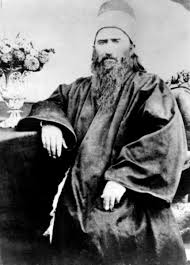 Founder of the Baháʼí faith, Baháʼu’lláh (a name that translates to ‘Glory of God’ in Arabic) was an Iranian mystic whose teachings emphasized the oneness of existence. As was the case with many other teachers of the perennial wisdom, Baháʼu’lláh landed in prison due to his challenges to existing religious and political orthodoxies.
Founder of the Baháʼí faith, Baháʼu’lláh (a name that translates to ‘Glory of God’ in Arabic) was an Iranian mystic whose teachings emphasized the oneness of existence. As was the case with many other teachers of the perennial wisdom, Baháʼu’lláh landed in prison due to his challenges to existing religious and political orthodoxies.
Key tenets of Baháʼu’lláh’s teachings included:
Oneness of God
Similar to all perennial wisdom teachings, Baháʼu’lláh taught there is one all-encompassing reality and that across time and place this Truth was brought to humankind through divine messengers like himself.
Oneness of Religion
Along those same lines, Baháʼu’lláh stated there was only one true religion and that the birth of each new religion was merely an unfolding of that story.
The world of being hath never had, nor doth it now have, nor will it ever have, any being but God.
Oneness of Humanity
He maintained that the prejudices, divisions, judgments, and inequalities plaguing humankind were a form of spiritual disease that kept humans trapped in cycles of darkness, and that these errors could be healed through love.
Progressive Revelation
Baháʼu’lláh said that divine messengers like Jesus, Buddha, Moses, Krishna, etc., brought with them teachings that were appropriate for humanity’s state of spiritual maturity.
Inner Transformation, Outer Service
As with other perennial wisdom teachers, including Guru Nanak (see his listing), Baháʼu’lláh said spiritual realization can unfold through inner transformation as well as outer expressions of compassionate action and the building of a just, peaceful, loving world.
A good introduction to Baháʼu’lláh and the Baháʼí faith can be found in: Baha’u’llah and the New Era: An Introduction to the Baha’i Faith.
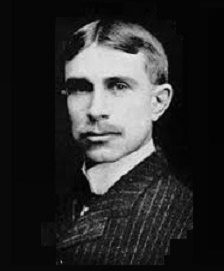 An American spiritual teacher and author best known for writing The Impersonal Life, Joseph Benner (1872–1938) deeply influenced many 20th-century seekers, including Elvis Presley, who is said to have carried the book with him everywhere. As the book’s title suggests, Benner’s writings were part of what he called ‘Impersonal Teaching,’ meaning a path of inner realization centered on awakening to the divine Self within – the I Am that is the true essence of every being.
An American spiritual teacher and author best known for writing The Impersonal Life, Joseph Benner (1872–1938) deeply influenced many 20th-century seekers, including Elvis Presley, who is said to have carried the book with him everywhere. As the book’s title suggests, Benner’s writings were part of what he called ‘Impersonal Teaching,’ meaning a path of inner realization centered on awakening to the divine Self within – the I Am that is the true essence of every being.
As with many other wisdom teachers, Benner wrote in a direct, first-person, God-voice (aka “Be still and know I AM God”). This was intended to awaken the indwelling Christ within, not as a mental concept but as a living reality.
You are what you believe you are. Not one thing in your life is Real or has any value to you only as your thinking and believing has made it such.
Core aspects of Benner’s teachings that align with the perennial wisdom include:
The Ego as Instrument
As with all perennial wisdom teachers, Benner said the individual self or ego is not the true Self (aka the I Am). Instead, it is an instrument or vehicle through which divinity expresses itself.
I Am
Along those same lines, the I Am or God is the Impersonal Self – the only true being, eternally present within the all of existence. Nothing is separate from that except in the imagination of the ego.
Silence and Surrender
Lasting peace can only be found when the small self / ego surrenders its will to God. It is in silence that God can be heard and Its will be done.
The Outer is a Distraction
Benner saw all forms of outer striving, including intellectual seeking, religious dogma, and other outward-focused seeking as unnecessary distractions that lead one away from God. God is omnipresent and available when we put these outer efforts to rest and sit in the silence.
Humility and Trust
The path to God is characterized as one of stillness, humility and trust – letting the divine operate through us rather than trying to live or be of service to God. God does not need us to manage things, It wants only to operate through us where true joy, bliss, and peace await.
A collection of Benner’s works, including The Impersonal Life, can be found in The Joseph Benner Collection. The Impersonal Life, The Way Out, The Way Beyond, Wealth, The Teacher (Timeless Wisdom Collection).
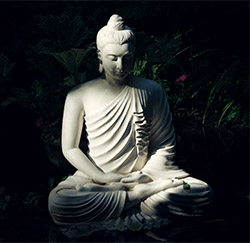 Born a prince in the 5th century BCE is what is now Nepal, Siddhartha Gautama (the Buddha) could not reconcile the suffering he witnessed outside his insulated palace life. Renouncing material pleasures, he embarked on a journey to overcome suffering. After an arduous journey filled with me false starts including nearly dying from asceticism, he eventually settled into a deep state of meditation until enlightenment was attained. His followers anointed him the Buddha, meaning the Awakened One. His teachings, collectively called the Dharma, form the foundation of Buddhism, yet their essence transcends religion – touching the same universal truths recognized by mystics and sages across traditions.
Born a prince in the 5th century BCE is what is now Nepal, Siddhartha Gautama (the Buddha) could not reconcile the suffering he witnessed outside his insulated palace life. Renouncing material pleasures, he embarked on a journey to overcome suffering. After an arduous journey filled with me false starts including nearly dying from asceticism, he eventually settled into a deep state of meditation until enlightenment was attained. His followers anointed him the Buddha, meaning the Awakened One. His teachings, collectively called the Dharma, form the foundation of Buddhism, yet their essence transcends religion – touching the same universal truths recognized by mystics and sages across traditions.
Among the Buddha’s core teachings are:
The Four Noble Truths
At the core of the Buddha’s teachings lie these Four Noble Truths, which lay out the framework for those eager to understand and ultimately transcend suffering.
- Dukkha – Life involves suffering, dissatisfaction, or restlessness.
- Samudaya – Suffering arises from craving, attachment, and ignorance.
- Nirodha – Liberation from suffering is possible.
- Magga – The Eightfold Path leads to the cessation of suffering.
No one saves us but ourselves. No one can and no one may. We ourselves must walk the path.
The Eightfold Path
This is a practical guide emphasizing ethical conduct, mental discipline, and wisdom in the form of: Right View, Intention, Speech, Action, Livelihood, Effort, Mindfulness, and Concentration.
Anatta (No-Self) and Anicca (Impermanence)
As with other perennial way teachers, the Buddha saw that the belief in a separate I is an illusion – there is no separation, only One. As such, everything is endlessly, constantly changing including these selves we call ‘I’ or ‘me.’ All of existence is dynamic and interdependent.
Nirvana
Nirvana is what others would call enlightenment, awakening, or liberation. From the Buddha’s perspective, it is the direct realization of the unconditioned, beyond name and form, and it represents the end of ignorance and the awakening to Reality-as-it-is.
Good books on the Buddha include: Old Path White Clouds: Walking in the Footsteps of the Buddha, The Heart of the Buddha’s Teaching: Transforming Suffering into Peace, Joy, and Liberation, and Buddhism: One Teacher, Many Traditions.
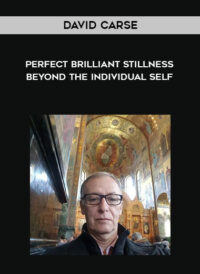 Relative to others on this list, Carse is something of an enigmatic figure primarily because, by his own admission, he was never a spiritual seeker and didn’t even know such a creature existed. But during a trip into the Ecuadorian Amazon, Carse experienced a complete spiritual awakening that, in many ways, aligns with similar experiences described by Robert Adams and Ramana Maharshi to name just two.
Relative to others on this list, Carse is something of an enigmatic figure primarily because, by his own admission, he was never a spiritual seeker and didn’t even know such a creature existed. But during a trip into the Ecuadorian Amazon, Carse experienced a complete spiritual awakening that, in many ways, aligns with similar experiences described by Robert Adams and Ramana Maharshi to name just two.
Carse’s description of the awakening combined with his global quest to find a teacher who could help him understand what happened to him, comprises the core of his teachings, which were captured in his book, Perfect Brilliant Stillness (we recommend the audio version narrated by the late-actor, Terrence Stamp).
Carse’s description of the collapse of the ego (“there’s nobody home”) perfectly aligns with key aspects of the perennial wisdom, including:
Nonduality (Advaita)
There is no separate self, only awareness, consciousness, presence. In the book he states it very directly and succinctly: “There never was anyone who awakened, because there never was anyone there.”
Immediacy of the Real
As with other perennial wisdom teachers, Carse maintains that awakening cannot be seen as something to seek or achieve but instead to be recognized as what already is. In other words, Carse says the real, the divine, God (the label is irrelevant) simply and always IS and, as such, there is no journey to take because there is no destination to be reached. We need only see through illusion or dream of separation.
Consciousness is all there is…. There is no individual, no entity, no separate self here to do anything or to be anything, awakened or enlightened included.
Collapse of the Ego
What stands out most in Carse’s description is the collapse in the notion of a separate self. Revealed in that collapse is the aforementioned ‘perfect, brilliant, stillness.’ Everything emanates out of that stillness.
Limits of Language
Again and again Carse points to the impossibility of describing Truth. Words, he says, can be used to point to it but they can never capture it. This is central to the perennial tradition, which regards silence and direct experience as higher than doctrine or belief.
Directness
Carse’s words are not chosen to be reassuring or to provide guidance – in fact, the only ‘directions’ given come at the book’s end when he tells the reader to wake up and allow him/herself to be ripped open, hollowed out. In this way Carse shares some of the same approach as Nisargadatta Maharaj (see his listing), who was similarly, direct and unwilling to play ‘mind games’ with students.
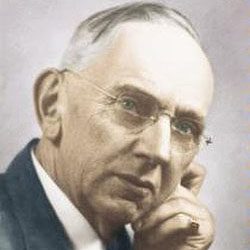 Often referred to as ‘The Sleeping Prophet,’ Edgar Cayce (1877–1945) was an American mystic and clairvoyant who gave more than 14,000 ‘readings’ from a trance state he described as an alternate state of consciousness. Cayce’s insights covered a wide range of topics including physical healing, dream interpretations, reincarnation, the nature of the soul, and spirituality. His thousands of readings were recorded and later organized by the Association for Research and Enlightenment, which to this day continues to study and disseminate his work.
Often referred to as ‘The Sleeping Prophet,’ Edgar Cayce (1877–1945) was an American mystic and clairvoyant who gave more than 14,000 ‘readings’ from a trance state he described as an alternate state of consciousness. Cayce’s insights covered a wide range of topics including physical healing, dream interpretations, reincarnation, the nature of the soul, and spirituality. His thousands of readings were recorded and later organized by the Association for Research and Enlightenment, which to this day continues to study and disseminate his work.
Birth in the physical is death in the spiritual. Death in the physical is birth in the spiritual.
Raised in a devout Christian household with a limited formal education, Cayce nevertheless possessed a deep spiritual curiosity and a lifelong devotion to mystical Christianity. His psychic abilities reportedly emerged after a period of illness and hypnosis; when placed in trance, he could diagnose physical ailments, prescribe remedies, and speak authoritatively on spiritual and metaphysical topics far beyond his conscious knowledge.
Cayce’s teachings closely aligned with many other perennial wisdom teachers, including:
Inner, Omnipresent God
Cayce’s position that God resides within every human being in line with other perennial wisdom teachings. “The spirit of God,” he said, “is the life force within every cell.”
Evolution of the Soul
Cayce described the soul’s journey as one of continual growth through many lifetimes, each an opportunity to learn love, service, and selflessness until returning to full unity with the Creator.
The Christ Consciousness
As with other Christian mystics, Cayce believed the Christ was not limited to the historical Jesus but, instead, represented a universal consciousness of divine love and oneness available to all. Jesus, he said, exemplified the ideal of this consciousness realized in human form.
Karma and Grace
Similar Joel Goldsmith (see listing), Cayce saw karma as the spiritual law of cause and effect. Rather than a punishment, karma is a vehicle for teaching the soul through experience. The soul evolves not through punishment but through learning, forgiveness, and love – consistent with the perennial recognition of a compassionate cosmic order.
Service as the Path to Awakening
Cayce consistently stated that liberation or awakening is tied to our service to others (aka love thy neighbor as thyself). To Cayce, service, compassion, and selflessness were the true measures of spiritual development, echoing the perennial truth that awakening expresses itself through love in action.
Mind as Builder
Mirroring perennial teachings about the creative power of consciousness and the illusory nature of material separation, Cayce taught that thought shapes reality spiritually, emotionally, and physically. “Mind is the builder,” he said, “the physical is the result.”
There are many books written about Edgar Cayce, including The Edgar Cayce Handbook, The Story of Edgar Cayce: There Is a River, and The Edgar Cayce Remedies: A Practical, Holistic Approach to Arthritis, Gastric Disorder, Stress, Allergies, Colds, and Much More.
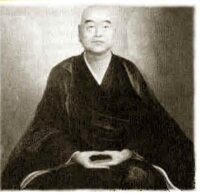 A Japanese Zen Buddhist monk, teacher, and philosopher, Dōgen founded the Sōtō school of Zen in Japan and is considered one of the most profound spiritual teachers in Japanese history. His best-known work is Shōbōgenzō or ‘Treasury of the True Dharma Eye,’ a vast collection of writings that explore the nature of existence, practice, and awakening. The core themes of his teachings include:
A Japanese Zen Buddhist monk, teacher, and philosopher, Dōgen founded the Sōtō school of Zen in Japan and is considered one of the most profound spiritual teachers in Japanese history. His best-known work is Shōbōgenzō or ‘Treasury of the True Dharma Eye,’ a vast collection of writings that explore the nature of existence, practice, and awakening. The core themes of his teachings include:
- Practice and Enlightenment Are One
Dōgen taught that enlightenment is not something attained in the future, but expressed in the present through practice itself. Sitting in meditation is awakening. - Impermanence and the Nature of Being
He deeply reflected on impermanence—not as a source of despair, but as the very dynamic expression of reality. - Shikantaza (Just Sitting)
Unlike methods aimed at attaining visions or mystical states, Dōgen emphasized “just sitting”—a radical openness to reality without clinging, grasping, or seeking. - Seeing the Sacred in the Ordinary
For Dōgen, enlightenment was not escape from the world, but full intimacy with each moment—chopping wood, carrying water, cooking, eating, all infused with the sacred.
Do not follow the ideas of others but learn to listen to the voice within yourself. Your body and mind will become clean and you will realize the unity of all things….
Although Dōgen did not speak in theistic terms (since Zen Buddhism does not posit a personal God), his teachings resonate with seekers of the Divine in profound ways:
- Letting Go of the Ego: His insistence on non-grasping and self-emptying parallels mystical traditions (Christian, Sufi, Jewish, Hindu) that teach union with God comes through surrender of the ego.
- Direct Experience: Instead of speculating about God or the Absolute, Dōgen’s practice immerses the seeker in direct encounter with ultimate reality, beyond concepts.
- Sacred Immediacy: By showing that every moment of life can be lived as awakening, Dōgen helps seekers realize the presence of the Divine not “out there” but right here.
- Union Rather than Duality: His view that practice and enlightenment are not two mirrors the way many mystics speak of humanity’s innate union with God, waiting only to be realized.
In short, for one searching for God, Dōgen’s way does not offer God as an object to be grasped, but rather invites one to drop searching and awaken to the immediacy of the sacred presence—what some might call “God”—in this very moment.
A good starting place for those interested in Dōgen may be The Essential Dogen: Writings of the Great Zen Master.
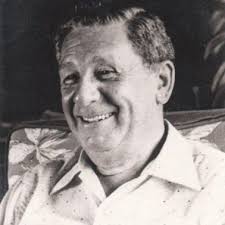 Born into a Jewish home, Goldsmith eventually found himself ensconced in Christian Science before a series of revelations led him to create his own work, the Infinite Way. A mystic, spiritual teacher, and healer, Goldsmith eschewed the idea of organized religion or spirituality and demanded that his followers not create an official organization, movement, or religion about his own teachings. Key aspects of his teachings included:
Born into a Jewish home, Goldsmith eventually found himself ensconced in Christian Science before a series of revelations led him to create his own work, the Infinite Way. A mystic, spiritual teacher, and healer, Goldsmith eschewed the idea of organized religion or spirituality and demanded that his followers not create an official organization, movement, or religion about his own teachings. Key aspects of his teachings included:
God is Human Consciousness
Goldsmith taught that God is not a ‘Santa Claus in the sky’ but instead an indwelling spirit – literally the essence of one’s own being. True prayer, he said, is not speaking to or petitioning or cajoling God but rather being still and allowing the ‘still small voice’ to be heard (communion with God).
Illusion of Separation
Goldsmith held that all human suffering stemmed from the belief in ‘two powers’ borne from our separation from God. Good vs evil, spirit vs mammon, these competing (dualistic) powers created in humans a profound sense of fear and isolation that was totally unnecessary because, in the words of all mystical traditions, I and God are One.
God expresses God, and that expression appears as you.
Grace
He argued that God could only make its way into our lives when we got our ego out of the way. Through surrender, God’s grace could spontaneously do its work through us. In other words, the mind could be used to start the journey, but it could never complete it. God is found in the silence / stillness of our being, not in words and thoughts and deeds (he similarly argued that while good was naturally preferred to evil, the mistake too many made was in believing that their good works would act as a conveyor to God).
Meditation as Practice
In an era (1930s – 50s) when meditation was virtually unknown to Western audiences, Goldsmith held that contemplative meditation was critical to spiritual development and divine inspiration. He regularly started and ended his talks with stretches of meditation.
The Infinite Invisible
Goldsmith regularly described God and ‘heaven’ as the infinite invisible to be found not in some future place but through our own consciousness. Through regular meditation we gradually awaken to an inner sense of presence of awareness that takes over our lives (lives that were never ours to begin with).
Goldsmith was a prolific writer. Among his best-known and most accessible books are: The Infinite Way, The Thunder of Silence, The Art of Meditation, Practicing the Presence, and The Art of Spiritual Healing.
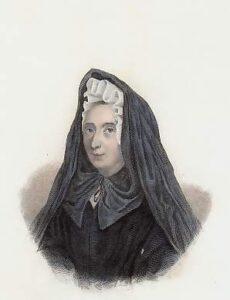 More commonly known as Madam Guyon, Jeanne-Marie Bouvier de la Motte-Guyon (1648–1717) was a French contemplative whose writings on prayer, surrender, and interior transformation were foundational to the Quietism doctrine and the Quaker movement.
More commonly known as Madam Guyon, Jeanne-Marie Bouvier de la Motte-Guyon (1648–1717) was a French contemplative whose writings on prayer, surrender, and interior transformation were foundational to the Quietism doctrine and the Quaker movement.
Although she never used the term Quietism, Guyon instead advocated a life spent in a “loving repose in God.” As with other perennial wisdom teachers, Guyon championed the idea of every human having direct access to the divine within and further maintained that such access required neither religious ritual nor intermediaries. Because such teachings flew in the face of the mighty Catholic church of the time, Guyon at times was threatened with imprisonment in the famous Bastille.
He who has learned to seek nothing but the will of God, shall find what he seeks.
Core aspects of Guyon’s teachings that most closely align with the perennial wisdom include:
Interior Illumination
Guyon taught that the only true sanctuary lay not within houses of worship but within one’s own being. God, she argued, is not found through effort and strain but in stillness and rest. “Rest. Rest. Rest in God’s love.”
Absolute Surrender
One cannot approach or know God so long as one is filled with desires, fears, efforts, and agendas. Instead we must surrender all of these because only then is the ego sufficiently silenced to make room for God.
Continuous Prayer
Much like Joel Goldsmith and other perennial teachers, Guyon said one must exist in a state of continuous prayer to God. Also like Goldsmith, this prayer is not filled with talk, thought, and recitations but rather an inner yielding to God’s will and an open ear to listen.
Union, Not Separation
Guyon’s theology was rooted in a love that dissolves the boundaries between others and the outside world. To love one’s neighbor is to love oneself.
Madam Guyon’s most notable work is the surprisingly modern, A Short and Easy Method of Prayer: Discovering Peace and Intimacy through Fellowship with God. Another spiritual classic is Guyon’s book, Experiencing the Depths of Jesus Christ.
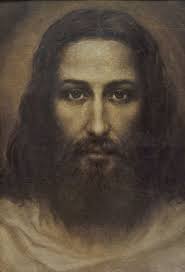 There is no spiritual figure better known that Jesus of Nazareth aka Christ Jesus. Although his actual itinerant ministry lasted perhaps three years at most, Jesus rocked a dusty little corner of the Roman empire with then-revolutionary admonitions to love one’s neighbor as oneself, turn the other cheek when struck, surrender more to the thief, etc. More than 2,000 years later the popularity of Jesus’s teachings remain unparalleled.
There is no spiritual figure better known that Jesus of Nazareth aka Christ Jesus. Although his actual itinerant ministry lasted perhaps three years at most, Jesus rocked a dusty little corner of the Roman empire with then-revolutionary admonitions to love one’s neighbor as oneself, turn the other cheek when struck, surrender more to the thief, etc. More than 2,000 years later the popularity of Jesus’s teachings remain unparalleled.
Core tenets of Jesus’s teachings include:
Union with the Divine
Jesus repeatedly pointed out that we are one and the same with God / the divine (what Jesus called ‘The Father’). Jesus’ message points beyond belief toward direct realization — knowing God not as an external being but as the living Presence within.
The Kingdom of God Within
As with other perennial wisdom teachers, Jesus maintained that our true nature was not to be discovered in the future or after death or but was, instead, already and always with us (‘closer than breathing’). In preaching that the kingdom of God is within each of us, Jesus was telling his followers that God cannot be found ‘lo here or lo there’ because it is at the very core of our being. In the perennial wisdom, the kingdom could be see as the state of awakened consciousness.
Whoever finds the meaning of these words will not taste death.
Love
At a time when a tooth for a tooth and an eye for an eye were the moral codes of the day, Jesus’s teachings are nothing short of revolutionary – particularly when it came to the concept of love. From the perspective of Jesus, you could not maintain that you loved God if you hated your neighbor (or an enemy), because all was One in God. As such he counseled that personal transformation was only possible when we loved a neighbor as ourselves and when we prayed for those outside our immediate circle.
Dying Before Death
Knowing his message would exist long after he was gone, Jesus leaned heavily on metaphor and other linguistic devices. In expressions such as ‘taking up the cross’ and being ‘born again’ Jesus was pointing to the idea of a death of the ego so that our true nature might be revealed. This of course is very much in line with perennial philosophy teachings, including the idea that one must ‘die daily’ to this life if he or she is to directly experience God.
God In All
Another of Jesus’s revolutionary teachings (we take them for granted now) was the recognition of God in all, including sinners and the diseased. He took pains to point out that ‘what one does to the least does to God.’ This is in line with the perennial wisdom’s teaching that the divine is all that there is – that to love or serve others is to love and serve oneself, which is God Itself.
Direct Experience
Although the Christian faith was erected in his memory and name, Jesus saw organized religion as anathema to mystical truths. While he did not call for the destruction of religions, he urged their followers and leaders to restore the living essence behind them. A cornerstone to that was the idea that direct experience of the divine was key, not religious dogma and definitely not human interlopers coming between an individual and God (e.g., priests and pastors).
The Universal Christ
Despite what many believe, Christ was not the surname of Jesus. It actually is a title meaning “the Anointed One” and is derived from the Greek christos and the Hebrew, mashiach or Messiah. From the perspective of the perennial wisdom, the Christ is a universal divine consciousness made manifest in Jesus (and other perennial wisdom teachers) but also intrinsic to every human being. Christ consciousness, in other traditions, is known as the Atman, the Tao, and the Buddha nature.
We recommend Elaine Pagel’s book, Beyond Belief: The Secret Gospel of Thomas, in part because this is the gospel said to be comprised entirely of the words of Jesus and because so many of those same quotes are in the very same spirit of the perennial wisdom teachings.
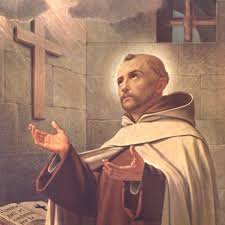 A Spanish mystic, poet, and Carmelite friar, John of the Cross (1542 – 1591) is widely regarded as one of the greatest Christian contemplatives. Alongside St. Teresa of Ávila, he reformed the Carmelite order and became a central figure in the tradition of Christian mysticism and its teachings of individuals advised to seek a direct, experience of God. His most famous works, including The Dark Night of the Soul, The Ascent of Mount Carmel, and The Spiritual Canticle, are delivered as a combination of poetry and deep spiritual psychology in their description of the soul’s journey toward union with God.
A Spanish mystic, poet, and Carmelite friar, John of the Cross (1542 – 1591) is widely regarded as one of the greatest Christian contemplatives. Alongside St. Teresa of Ávila, he reformed the Carmelite order and became a central figure in the tradition of Christian mysticism and its teachings of individuals advised to seek a direct, experience of God. His most famous works, including The Dark Night of the Soul, The Ascent of Mount Carmel, and The Spiritual Canticle, are delivered as a combination of poetry and deep spiritual psychology in their description of the soul’s journey toward union with God.
In tribulation immediately draw near to God with confidence, and you will receive strength, enlightenment, and instruction.
Teachings of John of the Cross that contribute to the perennial wisdom focus on a threefold path to spiritual transformation:
The Purgative Way
Here we find the individual undergoing the first stages of purification, perhaps beginning with seeing through the illusory nature of desire, the falsity of ego, the illusion of the world around it. This aligns perfectly with other perennial wisdom teachings espousing detachment from the outer world.
The Illuminative Way
By abandoning egoic pursuits and the desires that drive them, the inner light of divine truth begins to shine through.
The Unitive Way
Ultimately the false self altogether collapses and is fully absorbed into God’s unconditional love. Comparable to Rumi’s all-consuming talk of the unity of love and the vedantic tradition of self-realization, this is the final stage of union with God.
John of the Cross is perhaps most famously linked with the symbology found in the dark night of the soul, wherein the individual is said to undergo a period of trial and tribulation. Feeling lost, abandoned, and stripped of all certainty, the individual becomes what we would call ‘depressed’ but this is actually signs of God drawing him / her closer to the surrender and purification required of the threefold path.
As noted above, the famous works of John of the Cross are: The Dark Night of the Soul, The Ascent of Mount Carmel, and The Spiritual Canticle.
 Julian of Norwich holds the distinction not just as a medieval English mystic and spiritual writer in an age where women rarely if ever were permitted such voices, but also as the author of the earliest known book written in English by a woman. The book, Revelations of Divine Love, is considered one of the most profound meditations on Christian mysticism and is based on a series of divine revelations she experienced during a serious illness in 1373.
Julian of Norwich holds the distinction not just as a medieval English mystic and spiritual writer in an age where women rarely if ever were permitted such voices, but also as the author of the earliest known book written in English by a woman. The book, Revelations of Divine Love, is considered one of the most profound meditations on Christian mysticism and is based on a series of divine revelations she experienced during a serious illness in 1373.
Core tenets of her teachings included:
Divine Unity and Love Are the Ultimate Reality
One of Julian’s most famous revelations was that God is love. Not that God is loving but rather that God is love itself. God / Love is the essence of all being. As such all of creation is sustained in and by this love.
God made it, God loves it, God keeps it.
Oneness of God and Creation
Along that same note, Julian said there is no separation between God and any element of its creation – everything is and only is God. She said: “We are not just made by God, we are made of God.”
“We are not just made by God, we are made of God.”
The Feminine Face of the Divine
Fittingly, in her mystical illuminations Julian experienced God not only as Father but also as Mother, especially through the image of Christ as a nurturing, life-giving presence. Julian’s emphasis on the divine feminine mirrors similar insights from other traditions, including Shakti in Hinduism and Shekhinah in Kabbalah.
Evil, Suffering, and the Larger Harmony
One of her most famous – and controversial – insights was that all is well regardless of its perceived value in the human mind. Evil and suffering, she maintained, is part of a greater divine purpose, a recognition of cosmic harmony and ultimate reconciliation, akin to the perennial idea that dualities (good/evil, life/death) are resolved in the higher unity of the Real.
Direct Experience of the Divine
Julian did not speak of belief or dogma, but of knowing—a direct, intimate awareness of God within the soul. This aligns with the perennial wisdom’s commitment to direct knowing (gnosis) vs scripture alone.
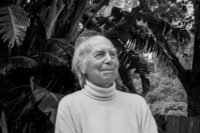 Klein was a French-born spiritual teacher and author known for presenting Advaita Vedānta in a humble, approachable style more accessible to Western audiences. Klein fled Nazi-occupied Europe and spent several years in India where he met his teacher, Pandit Veeraraghavacharya, and underwent intense spiritual training. After the war, Klein returned to Europe and offered quiet talks not unlike Vedantic satsangs. In keeping with the nondual (Advaita) lessons he received in India, Klein taught that subject and object, self and world were not two – that there is only One manifesting as many.
Klein was a French-born spiritual teacher and author known for presenting Advaita Vedānta in a humble, approachable style more accessible to Western audiences. Klein fled Nazi-occupied Europe and spent several years in India where he met his teacher, Pandit Veeraraghavacharya, and underwent intense spiritual training. After the war, Klein returned to Europe and offered quiet talks not unlike Vedantic satsangs. In keeping with the nondual (Advaita) lessons he received in India, Klein taught that subject and object, self and world were not two – that there is only One manifesting as many.
Core tenets of Klein’s teachings included:
The Natural State
We are always, already the timeless awareness that perceives all experience. Spiritual practice does not create this awareness—it reveals what has never been absent.
It is only through silent awareness that our physical and mental nature can change. This change is completely spontaneous.
Effortless Awareness
Klein taught that the mind’s striving obscures the reality of being. The shift from doing to being allows awareness to reveal itself naturally, without force.
The Body as Gateway
Trained in medicine and music, Klein integrated somatic sensitivity into his teaching, using relaxation and body-awareness to dissolve psychological resistance and foster inner stillness.
Freedom Beyond the Ego
Liberation (moksha) is not an achievement of the individual ego, but the recognition that there is no separate self to be liberated.
Klein wrote a number of books, most notably I Am, The Ease of Being, and Be Who You Are.
 A humble Carmelite lay brother in 17th-century France, Brother Lawrence is best known through the posthumous collection of his conversations and letters titled, The Practice of the Presence of God. Much like Rumi or Wei Wu Wei (see listings), Brother Lawrence held no formal theological position, yet his simple, straight-forward, spiritually-radiant prose has influenced countless seekers across time.
A humble Carmelite lay brother in 17th-century France, Brother Lawrence is best known through the posthumous collection of his conversations and letters titled, The Practice of the Presence of God. Much like Rumi or Wei Wu Wei (see listings), Brother Lawrence held no formal theological position, yet his simple, straight-forward, spiritually-radiant prose has influenced countless seekers across time.
Crippled by an injury and with little formal education, Brother Lawrence worked mostly in the monastery kitchen and later repaired sandals. Yet in his ordinariness, he discovered something extraordinary: the possibility of being continuously and joyfully aware of God’s presence in every act, no matter how mundane. He described this awareness not as a mystical trance but as a quiet, continual conversation with the Divine, maintained through love and simplicity of heart.
We ought not to be weary of doing little things for the love of God, who regards not the greatness of the work, but the love with which it is performed.
Core tenets of Brother Lawrence’s teachings included:
Practicing the Presence of God:
At the heart of Brother Lawrence’s teachings was the idea that God is not confined to churches or other specific places of worship. Instead, God can be found anywhere and always. This ties in with the perennial wisdom’s teachings on God’s omnipresence (God is everywhere, always). As such, Brother Lawrence prescribed a constant focus on God while engaged in every day activities – cooking food, cleaning the home, walking. This he called practicing the presence of God. “The time of business does not differ from the time of prayer.”
Simplicity and Surrender
Along those same lines, Brother Lawrence advised seekers to do away with complex rites and rituals, turn away from self-concern, and focus solely on an intention of selfless love. “We should establish ourselves in a sense of God’s presence by continually convering with Him.”
Inner Stillness and Joy
Lastly, he said true peace comes not from outer activities and focuses but, instead, an inner communion with the divine that is resident in each of us. peace comes not from external conditions but from inner communion with the divine Reality.
“The time of business does not differ from the time of prayer,” he said, “and in the noise and clatter of my kitchen… I possess God in as great tranquility as if I were upon my knees.”
The core of his teachings can be found in his book, The Practice of the Presence of God.
 Wife of a merchant, mother of 14 children, Margery Kempe was a mystic from the Middle Ages who underwent a series of spiritual revelations that manifested in spontaneous outbursts of tears and audible weeping that often landed her in trouble with the clergy. At some point she experienced a direct revelation from Christ Jesus, forever changing her life and compelling her to undertake numerous spiritual pilgrimages across Europe and the Middle East.
Wife of a merchant, mother of 14 children, Margery Kempe was a mystic from the Middle Ages who underwent a series of spiritual revelations that manifested in spontaneous outbursts of tears and audible weeping that often landed her in trouble with the clergy. At some point she experienced a direct revelation from Christ Jesus, forever changing her life and compelling her to undertake numerous spiritual pilgrimages across Europe and the Middle East.
Her lone book, The Book of Margery Kempe (often referred to simply as ‘The Book’), is considered by many to be the first autobiography penned in the English language.
Key aspects of her teachings that align with the Perennial Wisdom include:
God is Within
As with mystical contributors to the perennial wisdom, Kempe eschewed traditional religious hierarchy and doctrine in favor of seeking a direct, experiential relationship with God. She did not believe mediation between church and God was required.
I saw with the eye of my soul that he was with me and never parted from me.
Suffering as a Vehicle for Transformation
Often mocked by clergy and her townspeople, Kempe’s weeping was, in her estimation as well as other mystical authorities, symbolic of the soul’s purification through compassion and an identification with Christ’s suffering (at one point Kempe had a vision she had taken part in the crucifixion of Jesus). ,
Divine Love as the Ultimate Reality
As with other mystics including Julian of Norwich (whose counsel she sought during one of her many pilgrimages), she saw that love is the essence of God and existence itself.
Egoless Surrender
In her earlier years Kempe struggled with pride, sexual desire, vanity, and other states of ego and gradually recognized that to reach God requires the individual to abandon ego / self.
Universal Compassion
Her direct recognition and experience of Christ’s suffering led Kempe to earnestly pray for the suffering of all living creatures.
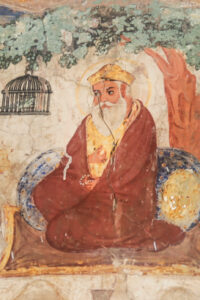 The founder of Sikhism, even as a young boy Nanak (also spelled Nanek) spurned most of the religious dogma and caste divisions that plagued India at a time of intense social, cultural, and political conflict (particularly between Hinduism and Islam). Nanak’s teachings transcended those divisions and spoke of a universal vision of unity, compassion, service, and direct experience of the divine. Following a profound spiritual experience in his 20s, Nanak began to travel across India and the Middle East spreading a gospel of unity and oneness.
The founder of Sikhism, even as a young boy Nanak (also spelled Nanek) spurned most of the religious dogma and caste divisions that plagued India at a time of intense social, cultural, and political conflict (particularly between Hinduism and Islam). Nanak’s teachings transcended those divisions and spoke of a universal vision of unity, compassion, service, and direct experience of the divine. Following a profound spiritual experience in his 20s, Nanak began to travel across India and the Middle East spreading a gospel of unity and oneness.
Core tenets of his teachings included:
Oneness of God
His most notable teaching, Nanak’s central teaching was Ik Onkar, meaning One Reality. He taught that God is beyond form, gender, name, etc., and was immanent in all things. This teaching of course aligns perfectly with other perennial wisdom teachings, including Vedanta, Sufism, and Christian mysticism.
Even Kings and emperors with heaps of wealth and vast dominion cannot compare with an ant filled with the love of God.
Direct Experience
Also as with other wisdom teachers, Nanak rejected the blind rituals, dogma, and caste divisions he saw plaguing traditional religions. Instead he urged his followers to seek direct communion with God, which he saw as their birthright and responsibility.
Equality and Compassion
Nanak took pains to point out that all humans – male and female, rich and poor, Hind or Muslim – were of the same God and as such were entitled to the same compassion and love. He urged his followers to serve their fellow men regardless of background and to earn an honest living.
Inner Stillness and Divine Remembrance
Similar to Christian mysticism’s call to keep God at the forefront of all thought, Nanak urged his followers to practice Naam Simran, which is to meditate on the divine name of God. Through this practice comes the dissolution of ego and realization of Oneness.
Egolessness
Nanak maintained that the root of human suffering lay in haumai, or the egoic sense of I, me, mine. Liberation, he said, came from humility, service to others, and surrendering to the divine will (hukam).
There are a number of books that offer strong insights into Nanak and his teachings, most notably: The First Sikh Spiritual Master: Timeless Wisdom from the Life and Techniques of Guru Nanak and Walking With Nanak.
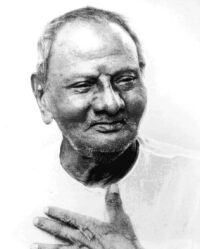 Nisargadatta Maharaj was an Indian spiritual teacher and one of the most well-known modern exponents of Advaita Vedānta (nondualism). A Mumbai resident, he led a simple life as a shopkeeper and became widely known after the publication of his talks in I Am That: Talks with Sri Nisargadatta Maharaj, a book widely considered the cornerstone of 20th-century nondual teachings. Famously direct and unsentimental, Nisargadatta did not hesitate to challenge the students who assembled in his small flat and even evict those who were not serious in their pursuits.
Nisargadatta Maharaj was an Indian spiritual teacher and one of the most well-known modern exponents of Advaita Vedānta (nondualism). A Mumbai resident, he led a simple life as a shopkeeper and became widely known after the publication of his talks in I Am That: Talks with Sri Nisargadatta Maharaj, a book widely considered the cornerstone of 20th-century nondual teachings. Famously direct and unsentimental, Nisargadatta did not hesitate to challenge the students who assembled in his small flat and even evict those who were not serious in their pursuits.
Core tenets of Nisargadatta’s teachings include:
I Am
Again and again he urged his students to focus on that timeless sense of I Am that existed within them prior to and after thoughts arose. He said it was in that awareness of I Am that the true Self – God – existed.
Wisdom is knowing I am nothing. Love is knowing I am everything. Between the two my life moves.
No Body, No Mind
Nisargadatta maintained that we are neither the body nor the mind – that the true nature of every human is timeless, formless consciousness untouched by personal history or circumstance.
Nonduality
Nisargadatta told his student the sense of separation between them and the outside world was an illusion and the cause of all suffering. Only the Self, pure awareness is real and infinite.
Liberation is Here and Now
As with other teachings of the perennial wisdom, Nisargadatta said liberation or enlightenment is not something to be attained at some future time or place. Instead, it is a recognition of what already is, always has been, and always will be.
Nisargadatta Maharaj’s most famous books and a must-read for anyone interested in Advaita Vedanta and the perennial wisdom is I Am That: Talks with Sri Nisargadatta Maharaj,
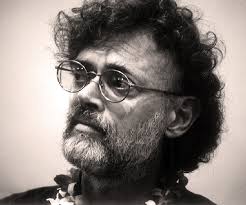 An ethnobotanist, writer, and visionary thinker, McKenna was best known for his deep explorations into consciousness, psychedelics, human evolution, aboriginal anthropology, and language.
An ethnobotanist, writer, and visionary thinker, McKenna was best known for his deep explorations into consciousness, psychedelics, human evolution, aboriginal anthropology, and language.
“Psychedelics are to the study of consciousness what the telescope was to astronomy.”
Key tenets of McKenna’s teachings included:
Entheogens as Pathways to the Divine
McKenna believed entheogens, such as psilocybin mushrooms, DMT, ayahuasca, and ibogaine could unlock deeper structures of consciousness through the dissolution of ego. These ideas aligned closed with mystical insights found in the perennial wisdom teachings, which hold that ultimate truth, God, One, Source, etc., could only be found through direct experience rather than religious dogma and New Age jargon.
-
This aligns closely with the mystical insight at the heart of perennial wisdom: that ultimate truth is not found through belief, but through direct experience of unity—what mystics call God, Brahman, or the One.
-
He often said, “Psychedelics are to the study of consciousness what the telescope was to astronomy.”
In this way, McKenna’s work echoes figures like Meister Eckhart, Rumi, and the Zen masters, who all spoke of an ineffable, direct knowing beyond words or dogma.
Unity of Mind, Spirit and Nature
McKenna’s cosmology rejected the materialist worldview. He proposed that mind and nature are not separate, but expressions of one evolving field of intelligence. Again, this jibes with the non-dual teachings found in Advaita Vedanta, Taoism, Meister Eckhart, and others.
Language, Myth, Logos
McKenna was fascinated by the idea that language itself is a divine force—the “logos” that brings reality into being. This ties in nicely with Hermetic and Christian mystical beliefs in Logos acting as a bridge between God and Its creation (aka, “In the beginning was the Word”).
Rousing the Modern Mind
McKenna was deeply critical of the Western world’s (now a global phenomenon) wholesale embrace of materialism. In his books and talks McKenna urged his audiences to transcend the material to rediscover the living divinity connecting them and the universe.
His best-known works were:
The Invisible Landscape: Mind, Hallucinogens, and the I Ching
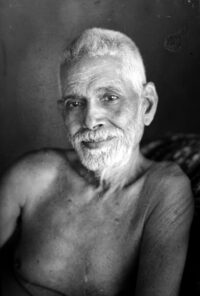 Considered one of the most influential figures in modern Advaita Vedanta, Ramana was an Indian sage who is often regarded as a living embodiment of the perennial philosophy—the universal wisdom underlying all spiritual traditions. Also sometimes known as the quiet sage, Ramana believed the most meaningful teaching was delivered in silence.
Considered one of the most influential figures in modern Advaita Vedanta, Ramana was an Indian sage who is often regarded as a living embodiment of the perennial philosophy—the universal wisdom underlying all spiritual traditions. Also sometimes known as the quiet sage, Ramana believed the most meaningful teaching was delivered in silence.
At age 16 and believing he was on the cusp of death, Ramana surrendered to the moment and, in a sense, DID die as his ego fell away to reveal the divine. In that moment, he realized that while the body may die, the Self—pure consciousness or Being—is eternal and deathless. From there he moved on to the sacred mountain, Arunachala, where he lived for the rest of his life as a renunciate and teacher.
Core tenets of Ramana’s teachings include:
Self is God
As with other perennial wisdom teachers, Ramana taught that there is only One reality – pure, effortless, formless consciousness, known in sanskrit as sat-chit-ananda or being-consciousness-bliss. Other labels for this are God, Self, the Absolute.
Your own Self-Realization is the greatest service you can render the world.
Self-Inquiry
Ramana maintained that the most direct path to self-awareness was made through self-inquiry (ātma-vichāra). By repeatedly and steadfastly inquiring into one’s own nature – Who Am I? – the seeker interrupts the mind’s usual cacophony of thoughts. When thoughts do intrude, Ramana encouraged seekers to ignore the contents of the thoughts and instead ask, ‘To whom do these thoughts arise?’ By seeking this I-source the mind grows quiet and eventually is absorbed into the metaphorical heart center where the true Self resides.
Silence
Visitors from around the world were often shocked to discover how little Ramana actually spoke during their visits. But even his most ardent skeptics said that his gaze opened something in them that could never again be closed. Ramana said silence was the highest teaching and that words usually only got in the way of Truth.
Oneness
In the truest sense of Advaita Vedanta (nonduality), Ramana said there was no separation between the individual and the outside world. All was One. The outside world, he said, was illusory appearance and one must transcend that world to recognize Truth.
There are many books on Ramana Maharshi and his teachings, most notably: Be As You Are: The Teachings of Sri Ramana Maharshi, Who Am I?, and The Collected Works of Ramana Maharshi.
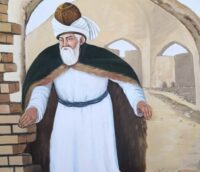 A Persian scholar, poet, and mystic, Jalāl al-Dīn Rūmī was a 13th-century Persian mystic, theologian, and poet whose teachings transcended religion, language, and culture. Rumi got his start as a respected Islamic scholar before undergoing a profound spiritual transformation after meeting the wandering mystic Shams of Tabriz. The encounter sparked a love-infused mystical realization that became central to both his poetry and philosophy.
A Persian scholar, poet, and mystic, Jalāl al-Dīn Rūmī was a 13th-century Persian mystic, theologian, and poet whose teachings transcended religion, language, and culture. Rumi got his start as a respected Islamic scholar before undergoing a profound spiritual transformation after meeting the wandering mystic Shams of Tabriz. The encounter sparked a love-infused mystical realization that became central to both his poetry and philosophy.
Rumi is perhaps best known for his prodigious collection of poems that speak to the concepts of universal love, oneness, the importance of the mystical journey (seeking a return to God / Source), and the critical nature of the heart (versus the mind) as the path of transformation from ego to spirit / soul. Rumi wrote of love as the essence of all existence, tied humans suffering to our perceived separation from God, and associated human restlessness our desire to return to God. And in line with so many other perennial way teachers, Rumi maintained that the ego – and the outside world – were illusory veils that obscured the inherent oneness in all things.
Core tenets of Rumi’s teachings include:
Direct Experience
As with all perennial wisdom teachers, Rumi maintained that we must move beyond blind faith, belief, and dogma in order to directly experience the divinity within.
Unity of Being (Tawḥīd)
Rumi stated that all existence is an expression of the One divine reality; that separation from the One is nothing more than a dream; and that ultimately all will return to the Source eventually.
What you seek is seeking you.
Love as the Path to God
Divine love (ishq-e-haqīqī) is both the means and the end of the spiritual journey. Love dissolves the ego and reveals the Beloved within.
Inner Transformation
The false self or ego must be purified through the symbolism of burning, melting, or shattering so that the divine essence may shine through (in Christian mysticism this is tantamount to Paul’s admonition to ‘die daily’ until the sense of a separate self is extinguished).
Beyond Religion and Form
As with other perennial wisdom teachings, Rumi argued that all religions and spiritual movements point to the same thing. “The lamps are different, but the Light is the same.”
Silence and Stillness
Similar to Ramana Maharshi’s teachings, Rumi maintained that the deepest, truest knowing comes not from words or thoughts but from inner silence, where the heart recognizes its unity with the Divine.
There are many books on Rumi, but we recommend getting started with these: The Essential Rumi, I Love You Forever: An Exquisite Collection of the Loving Poems by Rumi: An Authentic Translation, and The Garden of Rumi’s Poetry: A Collection of the Best Poems of Rumi (Poetry Collections by Rumi, Hafiz, and Other Persian Poets).
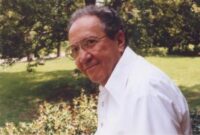 An American spiritual teacher and mystic, William Samuel’s work bridged Eastern and Western wisdom traditions. Though not widely known in mainstream spiritual circles, his writings and recorded talks earned him a quiet following among seekers profoundly impacted by his teachings. During his service as a U.S. Army officer in both World War II and the Korean War, Samuel immersed himself in spiritual studies, meditation, and prayer. It was during a particularly intense battle in the Korean conflict that he underwent a profound awakening that he characterized as a spontaneous recognition of the “unchanging Peace behind all appearances.”
An American spiritual teacher and mystic, William Samuel’s work bridged Eastern and Western wisdom traditions. Though not widely known in mainstream spiritual circles, his writings and recorded talks earned him a quiet following among seekers profoundly impacted by his teachings. During his service as a U.S. Army officer in both World War II and the Korean War, Samuel immersed himself in spiritual studies, meditation, and prayer. It was during a particularly intense battle in the Korean conflict that he underwent a profound awakening that he characterized as a spontaneous recognition of the “unchanging Peace behind all appearances.”
Core tenets of Samuel’s teachings included:
Awareness as God
Samuel taught that what we call awareness, consciousness, being or God are one and the same thing, representing the One ineffable divine being. As with all perennial wisdom teachers, he emphasized direct experience of this awareness of God over intellectual exercises. “Awareness,” he said, “is the Presence of God being aware.”
The very Identity you are, that which is listening is all the power in the world.
The Child Within
Perhaps his most distinctive metaphor, Samuel referred to the Child Within as the unconditioned, innocent Awareness prior to conceptual thought – the same essence Jesus referred to when he said, “Except ye become as little children, ye shall not enter the kingdom of heaven.” Jesus is said to have urged his followers to return to the state of childlike innocence. Far from psychological, this child is the timeless, ever-present Self through which the divine is known.
NonDuality
As with Advaita Vedānta and Taoism, Samuel pointed to the illusory nature of subject-object duality. He spoke of “the Absolute within which both light and shadow appear.” From Samuel’s perspective, both war and peace, life and death, are expressions of the one undivided Awareness.
Living Realization in the World
Samuel emphasized that realization is not withdrawal from the world but living in it with compassion and clarity. He saw life as a kind of living classroom for the development of self-awareness and self-realization.
The best books to get to know William Samuel and his teachings include: A Guide to Awareness and Tranquility, The Child Within Us Lives!, and The Awareness of Self-Discovery.
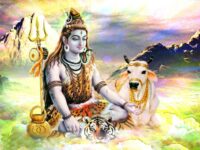 An 8th-century Indian philosopher and mystic, Adi Shankaracharya (aka Shankara) is credited with breathing new life into the ancient school of Advaita Vedānta, one of the major vedantic schools of Hindu philosophy. His teachings are among the clearest expressions of the perennial philosophy, most notably in the view that all genuine spiritual traditions point toward a single, universal truth about the nature of reality and consciousness.
An 8th-century Indian philosopher and mystic, Adi Shankaracharya (aka Shankara) is credited with breathing new life into the ancient school of Advaita Vedānta, one of the major vedantic schools of Hindu philosophy. His teachings are among the clearest expressions of the perennial philosophy, most notably in the view that all genuine spiritual traditions point toward a single, universal truth about the nature of reality and consciousness.
Among Shankara’s core teachings are:
One Reality
Brahman or God is the infinite, formless, timeless mode of consciousness from which all existence is made manifest.
True Self
Atman is the true Self (not the small ‘s’ self or ego) that abides within every human. Atman is expressed in Christian mysticism in terms such as ‘I and the father are One’ and ‘Be still and know that I am God.’
When the Great Reality is not known the study of the scriptures is fruitless; when the Great Reality is known the study of the scriptures is also fruitless.
The Universe is Maya
The material universe is an illusory appearance masquerading as something real, separate, and apart from the One. Maya can be seen as a dream state, illusion, unreal, a projection of mind. When we fail to recognize this truth, we suffer.
Ignorance is Bondage
Human ignorance of the aforementioned truths are what keeps us in bondage to both body and mind.
Liberation
To recognize one’s true identify is to experience liberation, enlightenment, moksha. As with other perennial wisdom teachers, Shankara taught that moksha was not to be sought but rather to be recognized as the infinite state of being of which we are.
A great place to start in learning more about Shankara and his teachings is the book, Shankara’s Crest Jewel of Discrimination.
 A Spanish Carmelite nun, mystic, reformer, and Doctor of the Church, St. Teresa of Avila written works are considered by followers of Christian mysticism to be among the most profound reflections on contemplative prayer and union with God. Her books specifically focus on the journey of the soul toward divine union, offering an experiential guide to inner transformation that perfectly aligns with other teachings of the perennial wisdom.
A Spanish Carmelite nun, mystic, reformer, and Doctor of the Church, St. Teresa of Avila written works are considered by followers of Christian mysticism to be among the most profound reflections on contemplative prayer and union with God. Her books specifically focus on the journey of the soul toward divine union, offering an experiential guide to inner transformation that perfectly aligns with other teachings of the perennial wisdom.
A native of Avila, Spain, Teresa entered the Carmelite order in her twenties and eventually led a reform movement aimed at restoring the simplicity, poverty, and interior devotion to monastic life. Teresa experienced profound mystical states – visions, ecstasies, and a deep sense of divine indwelling – which she described not as stages of awakening to a reality already within the soul. Her spiritual path was one of radical honesty, humility, and surrender – qualities she considered essential to realizing oneness with God.
Among Teresa’s core teachings are:
The Inner Journey to God
As with other perennial wisdom teachers, Teresa taught that the divine is not found ‘out there’ but rather within one’s self. In her book, The Interior Castle, she painted a picture of the soul as a crystal castle with seven ‘mansions,’ each representing the successive degrees of inner awakening. She said this journey as a gradual abandonment of outside, material distractions and egoic attachments toward one’s innermost center were God resides.
The soul is like a castle made entirely of diamond or very clear crystal, in which there are many rooms, just as in Heaven there are many mansions.
Union Through Love
As with Julian of Norwich (see listing) and other mystics, Teresa recognized that love – not the mind – was the key to divine union. And similar to Joel Goldsmith (see listing), she maintained that prayer was not about words spoken AT God or techniques found in organized religion, but instead representative of a state of listening where one became aware of God’s presence within.
Ego Death and Surrender
In line with David Carse (see listing), Teresa emphasized the importance of self-emptying (kenosis), humility, surrender, and the ultimate dissolution of the false self (ego). Only when the ego is transcended can the divine act on and through the individual.
God in All
Not unlike Meister Eckhart and Joel Goldsmith (see listings), Teresa maintained that one’s ultimate goal was a direct, non-mediated experience of God. She saw theology and organized religion as impediments to this union, since they require a subject (ego) and an object (scripture, church leaders, etc.) coming between the seeker and the God within. Her mystical union was not conceptual but experiential, aligning her with mystics of all traditions who have realized the same truth beyond dogma.
Teresa of Avila’s notable works are: The Interior Castle, The Way of Perfection, and The Book of Her Life.
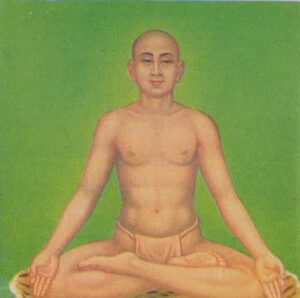 Also spelled Tayumanavar, Thayumanavar (1705–1742) was a Tamil mystic, poet, and saint from South India considered one of the greatest voices of spiritual realization in Tamil literature. Revered in both the Shaiva Siddhanta and Advaita Vedanta traditions, his verses are often ecstatic, deeply introspective, and poetically refined and they speak to nondual awareness, dissolution of the ego, and the importance of direct experience of divine unity.
Also spelled Tayumanavar, Thayumanavar (1705–1742) was a Tamil mystic, poet, and saint from South India considered one of the greatest voices of spiritual realization in Tamil literature. Revered in both the Shaiva Siddhanta and Advaita Vedanta traditions, his verses are often ecstatic, deeply introspective, and poetically refined and they speak to nondual awareness, dissolution of the ego, and the importance of direct experience of divine unity.
God is the One who determines what we should do. We are mere agents or tools to carry out the Divine Will.
Core aspects of his teachings that align closely with the perennial wisdom include:
Mouna (Inner Silence) as the Supreme Practice
Thayumanavar repeatedly praises mouna — not mere verbal silence but the deep, effortless stillness of mind in which the Self shines by itself. Much like his countryman and fellow sage, Ramana Maharshi, Thayumanavar believed that silence was ‘ the real kingdom of God.’
Oneness Beyond Dogma
As with other perennial wisdom teachers, Thayumanavar eschewed the rites, rituals, and dogmas of conventional religions for the direct experience of God. He insisted that Truth transcends all religious orders and that the divine cannot be contained by doctrine.
The Divine Within
Like the Upanishadic sages and the mystics of the perennial wisdom, Thayumanavar taught that the Self (Ātman) and the Supreme (Brahman or Shiva) are one and the same. Realization is not attained through external striving but through inner awareness.
Love and Grace
He spoke of divine love as both the path and the fruit of realization. The Divine, he said, is ever ready to reveal Itself once the ego’s illusions dissolve.
Integration of the World and Spirit
Though he renounced worldly status, Thayumanavar did not reject the world as illusion; rather, he saw it as the play of the Divine Consciousness, much as Advaita Vedanta and the Perennial Philosophy describe.
The verses of Thayumanavar can be found in the Tamil book, Sri Thayumanavar Padalkal.
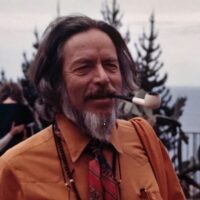 A British philosopher, writer, and speaker, Alan Watts was perhaps best known for translating and popularizing Eastern spiritual ideas for Western audiences at a time when various counter-cultural movements were taking root both in the U.S. and across the developed world. A thoughtful, eloquent, dazzlingly talented extemporaneous speaker, Watts played a major role in bringing the principles of Zen Buddhism, Taoism, and Vedanta into mainstream Western thought. Watts’s contributions of perennial teachings were many, including:
A British philosopher, writer, and speaker, Alan Watts was perhaps best known for translating and popularizing Eastern spiritual ideas for Western audiences at a time when various counter-cultural movements were taking root both in the U.S. and across the developed world. A thoughtful, eloquent, dazzlingly talented extemporaneous speaker, Watts played a major role in bringing the principles of Zen Buddhism, Taoism, and Vedanta into mainstream Western thought. Watts’s contributions of perennial teachings were many, including:
Bridging East and West
In an era when mainstream religions still dominated the West, Watts was one of the first to intro and make understandable the fundamental philosophies and spiritual traditions of the East (Orient), particularly Zen Buddhism, Taoism, Hindu’s Vedanta practices, and Christian mysticism.
The meaning of life is just to be alive. It is so plain and so obvious and so simple. And yet, everybody rushes around in a great panic as if it were necessary to achieve something beyond themselves.
Reframing the Self
In true Eastern tradition, Watts sought to tear down Western ideas of a separate, isolated self (ego) and replace it with the idea we are complete expressions of the One, infinite Being – waves of the ocean of existence. As with other wisdom teachers, Watts believed the path to self-knowledge was also the path to Self knowledge (e.g., divine realization).
A Western Approach
Perhaps his greatest contribution was in using Western thought, language, and cultural touchstones to introduce Eastern mysticism and spiritual traditions to Western audiences. Using humor, metaphor, and direct speech, Watts was able to synthesize complex mystical concepts into ideas and trains of thought American and European audiences could easily follow.
Encouraging Direct Experience
As with other perennial wisdom teachers, Watts counseled direct, experiential knowledge (gnosis) versus the blind (hopeful, guilt-ridden) belief systems and dogma choking the living truth out of traditional Western religions. Like so many wisdom teachers, Watts urged his listeners to make the effort to wake up to their own truth.
Connecting Science and Spirit
Watts recognized that Western science had a role to play in spiritual teachings, particularly as modern physics increasingly revealed the unassailable truth that all of existence was One masquerading as many.
Watts gave countless talks and penned a number of books, most notably Out of Your Mind, The Book, The Wisdom of Insecurity and The Way of Zen.
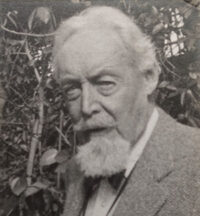 The pen name of Terence James Stannus Gray, Wei Wu Wei was an Anglo-Irish mystic, writer, and philosopher whose works explored the nature of reality, the illusion of the ego, and the direct experience of nonduality. Similar to Alan Watts (see his listing), Wei Wu Wei’s writings were considered important influences in helping Western audiences better understand the principles behind Advaita Vedanta, Zen Buddhism, and the Perennial Philosophy.
The pen name of Terence James Stannus Gray, Wei Wu Wei was an Anglo-Irish mystic, writer, and philosopher whose works explored the nature of reality, the illusion of the ego, and the direct experience of nonduality. Similar to Alan Watts (see his listing), Wei Wu Wei’s writings were considered important influences in helping Western audiences better understand the principles behind Advaita Vedanta, Zen Buddhism, and the Perennial Philosophy.
He traveled extensively in Asia, studying Buddhism and Taoism, and was particularly influenced by Ramana Maharshi, the Chan (Zen)masters, and the Taoist principle of non-action (wu wei), from which his pen name derives.
Key tenets of Wei Wu Wei’s teachings include:
No Me
At the heart of all Wei Wu Wei writings is the idea that there is no independent, separate self. What every human holds to be ‘me’ is, in fact, merely a manifestation of the one true Self or God.
As long as there is a ‘you’ doing or not-doing, thinking or not-thinking, meditating or not-meditating, you are no closer to home than the day you were born.
I Am That
This absolute, One is what each of us already is. We cannot be anything other than That. As such, there is no enlightenment or liberation to be attained but instead only to be recognized (or remember, aka re-cognized).
The World is Mind
The temporal, phenomenal, dualistic universe and all that it holds is a projection of the mind. There is no observer apart from the observed. Or looked at another way, the seer, the seeing, and that which is seen are all one and the same thing.
Non-Doing
The authentic spiritual life is less about effort or doing good than in ceasing to identify with the one seemingly doing these things. Only when this is recognized can the True Self spontaneously shine forth.
Wei Wu Wei wrote a number of books, the most notable being Open Secret, Ask the Awakened, All Else Is Bondage, and Fingers Pointing Towards the Moon.
Subscribe for Updates
Complete the form below and I’ll email you with updates.
Subscribe for Updates
Complete the form below and I’ll email you with updates.
